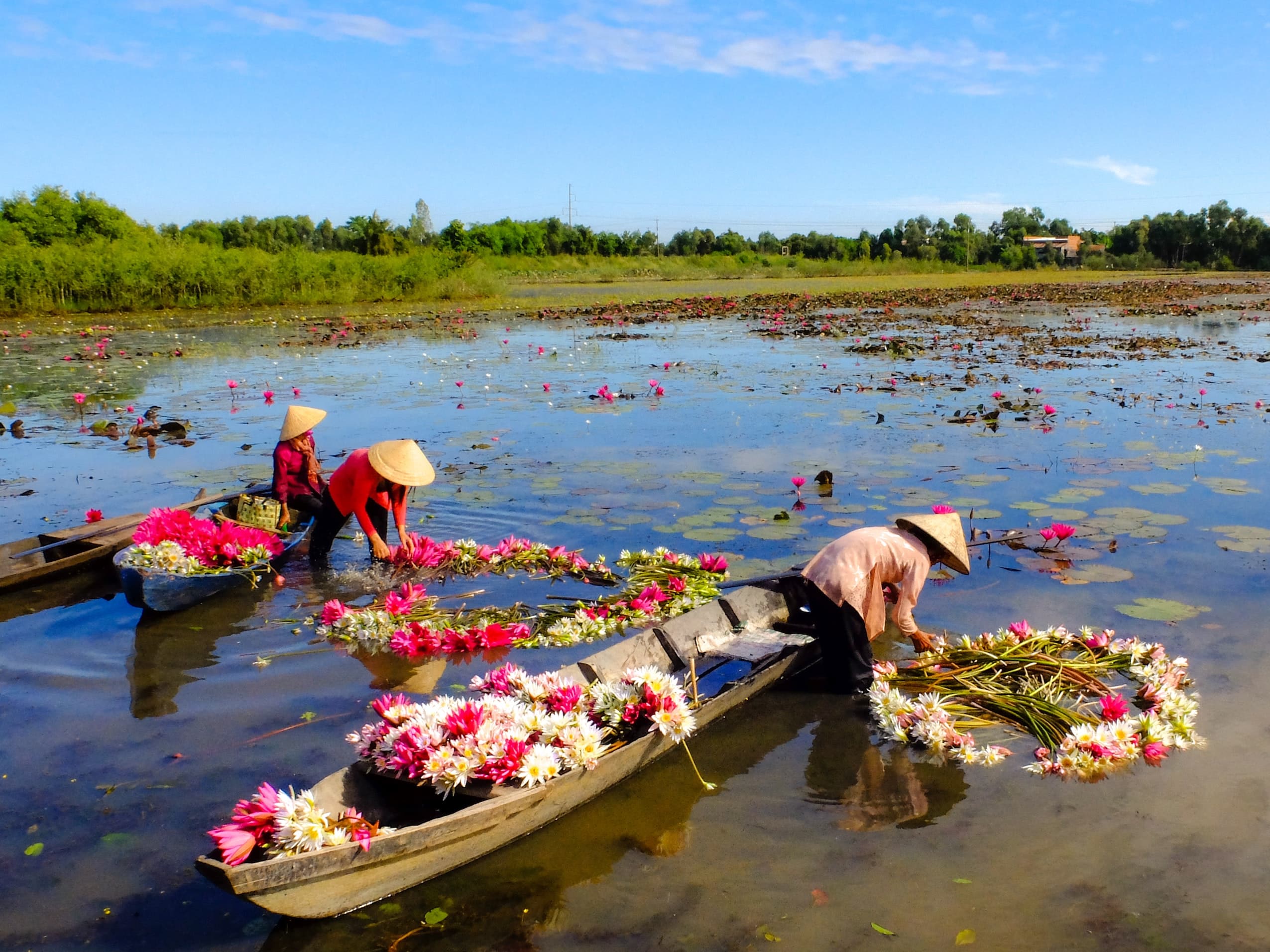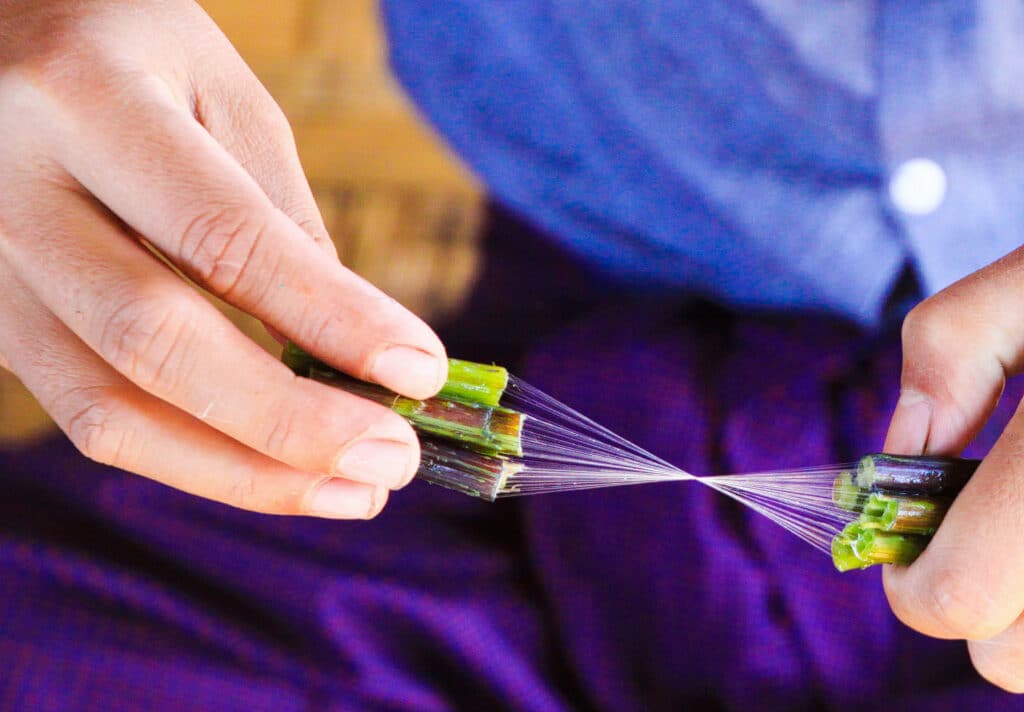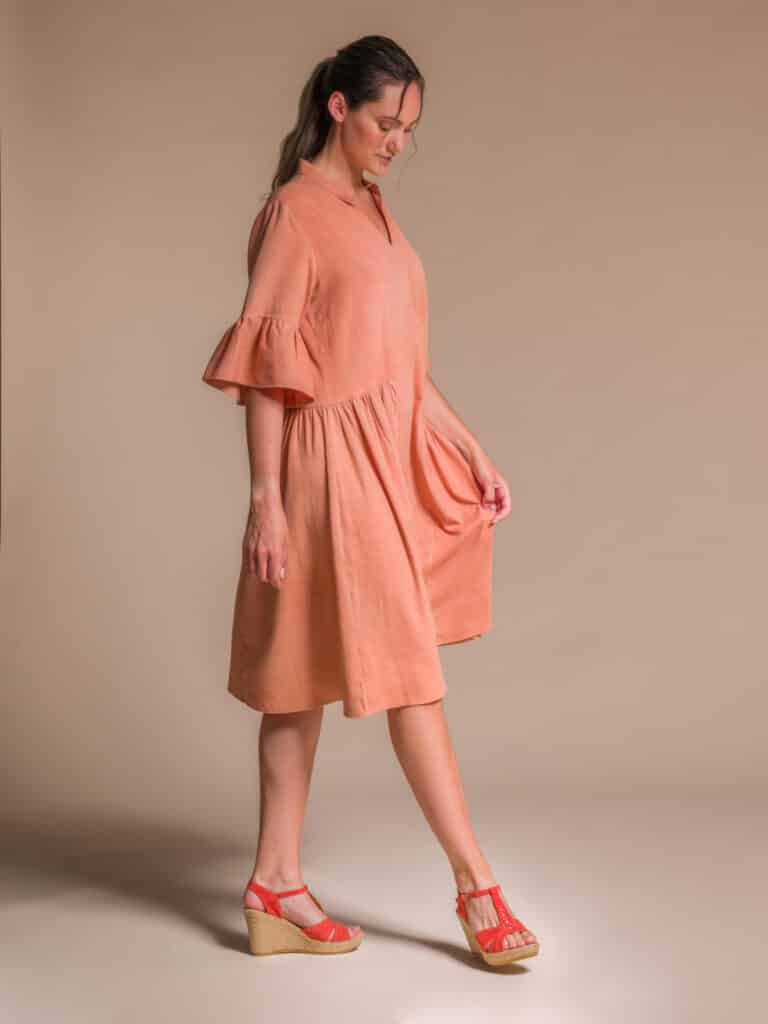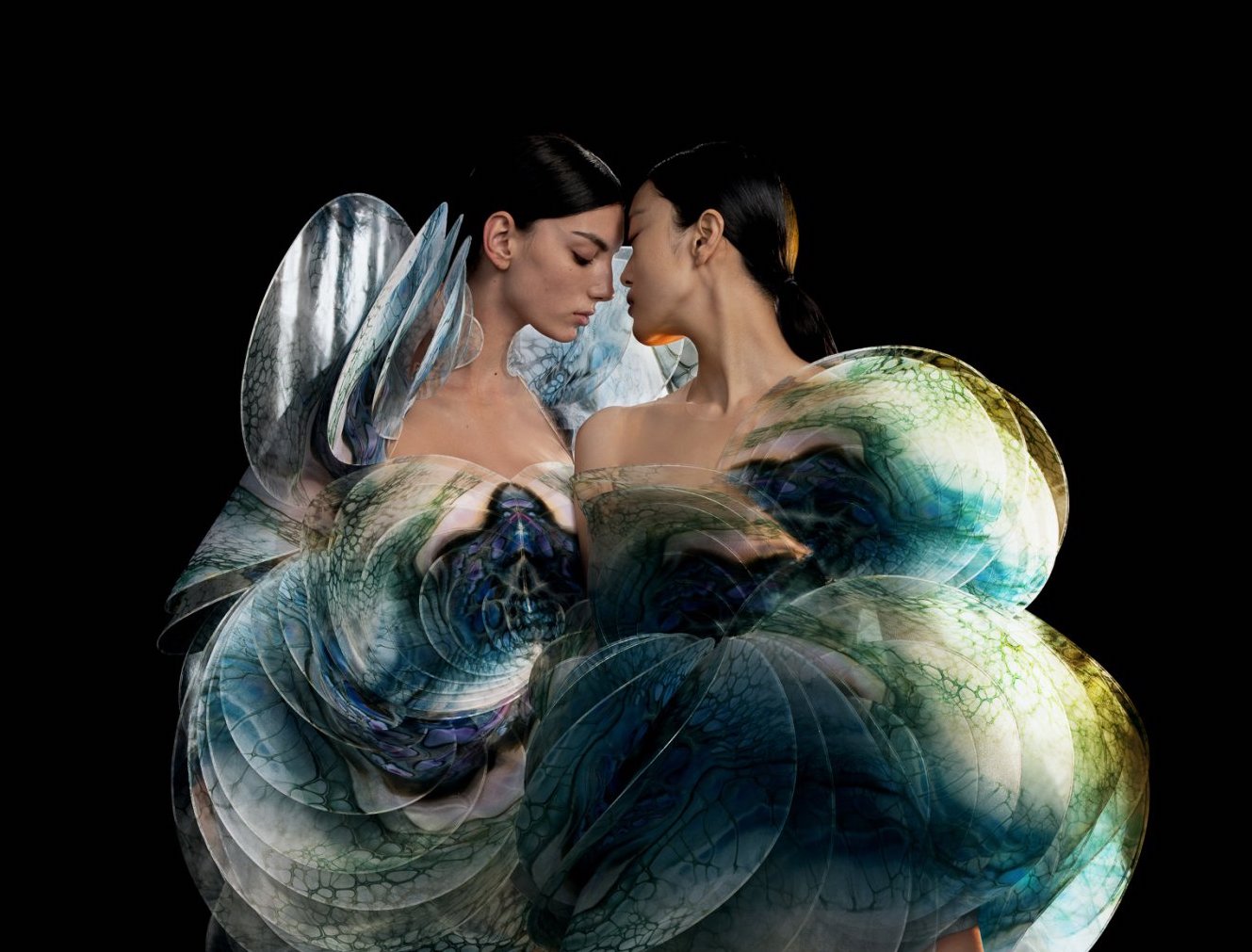The lotus flower , known as a mythical perennial aquatic plant, can be used to produce one of the most astonishing and rare fabrics for its natural characteristics. In Cambodia , many people make a living from harvesting this plant, selling its seeds to make snacks or exporting it abroad. While it has long been a mythical symbol of harmony, today it could become the perfect alternative to synthetic fabrics.
« Between silk and linen »
« For many Asian cultures, lotus flowers symbolise divine purity, appearing in the hands of the sacred Buddha. They also play a major role in Asian folklore, and are a particularly important icon in the homes of many weavers. The fabric created from the stems of the lotus flower is an intermediary between silk and linen. It was historically used to weave the robes of high-ranking Buddhist monks “explains Awen Deleval, the French founder of Samatoathe ecological and responsible textile cooperative, on his Youtube channel.
After months of research at the Lotus Center (Battamabang, Cambodia), he developed a fabric described as a cross between silk and linen, but endowed with incredible natural qualities: water- and stain-resistant, breathable, wrinkle-resistant and soft to the touch.
Lotus fabric is made by hand and is very time-consuming, as one metre of fabric requires around 32,000 lotus stems. With 25 women, it takes around a month and a half to make 90 metres of fabric without producing any waste. The “leftovers” are used to make infusions and teas.
The story of Phan Thi Thuan, a pioneer in Vietnam
Vietnamese weaver Phan Thi Thuan also saw a new opportunity in the lotus stems that end up rotting in nearby fields after the seeds have been harvested for food. She began extracting the fiber contained in the stems to make “lotus silk”, a fabric prized by fashion designers.
“I was the first in Vietnam”, the 65-year-old proudly tells AFP. Lotus silk is also produced in neighboring countries such as Burma and Cambodia, but Thuan is regarded as a pioneer in her homeland She has received support from the Ministry of Science and Technology, which has launched a national project to try and develop this manufacturing technique.
Phan Thi Thuan began weaving at the age of six in her village on the outskirts of Hanoi. At the time, her great-aunt was making and selling traditional silk to the French during the colonial period and taught her the technique.
“In the past, farmers would spend hours cleaning lotus crops to remove rotten stems, which ruin the soil and attract many pests. But thanks to her visionary initiative, Ms Thuan now heads a team of around twenty employees, mainly women, who remove the stems“, she explained to AFP.
Her work is meticulous. “A large lotus silk scarf requires the thread from around 9,200 stems and it would take one worker two months to finish it, but it’s worth the effort“, she insists. “I feel that this is my job, that I’m creating jobs and that I’m doing something for the environment,” she says.
This perseverance is justified, as a lotus silk scarf would cost ten times more than an ordinary silk scarf.
Sofia Vera: lotus silk and 100% natural fibers
Sofia Vera a young French fashion label based in Biarritz, uses lotus fabric in its creations. Launched this year, the brand was born following a trip to Indochina.
Its founder, Sophie Redhon, discovered lotus silk fabric and was immediately struck by the beauty, feel and uniqueness of this rare and exquisite textile, made entirely from the stem of the flower. All her clothes are made from rare and luxurious fabrics such as lotus silk, which are 100 per cent natural.
This is also the case for Italian luxury brand Loro Piana, which has created its own improved lotus flower fibre, the “Loro Piana Lotus flower fabric”.








